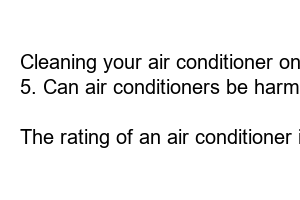에어컨 평수 계산
Air conditioners have become a necessity in today’s world with the rising temperatures due to global warming. The importance of staying cool and comfortable has made air conditioners a popular household appliance. However, choosing the right air conditioner can be overwhelming with the various options available in the market. One factor that plays a crucial role in selecting an air conditioner is its rating calculation. Let’s dive in and understand more about how air conditioner rating calculation works.
What is a rating calculation?
A rating calculation is a measure of an air conditioner’s efficiency in cooling a room. It is also known as an energy efficiency rating (EER). The higher the rating, the more efficient the air conditioner will be in cooling. It is calculated by dividing the cooling capacity (in BTUs) by the power consumption (in watts).
What is a BTU?
BTU stands for British Thermal Unit, which is the unit of measurement used for the cooling capacity of an air conditioner. One BTU is equal to the amount of energy required to cool or heat one pound of water by one degree Fahrenheit.
What is Watt?
Watt is the unit of measurement for the amount of power consumed by an air conditioner. The power consumption of an air conditioner is determined by its size, the temperature outside, and the temperature inside the room.
What is SEER?
SEER stands for Seasonal Energy Efficiency Ratio, which is another measure of an air conditioner’s efficiency. SEER ratings are more comprehensive than EER ratings as they account for the air conditioner’s energy consumption throughout the year and under different weather conditions.
What are the different ratings for air conditioners?
Apart from EER and SEER, air conditioners also have other ratings such as Energy Star rating, BEE rating, and ISEER rating. These ratings are issued by government bodies and organizations to ensure that the air conditioners are energy-efficient and environment-friendly.
How to calculate the rating of an air conditioner?
To calculate the rating of an air conditioner, you need to determine its cooling capacity in BTUs and its power consumption in watts. Divide the cooling capacity by the power consumption to get the EER rating. To calculate SEER, you need to consider the air conditioner’s performance throughout the year and under different weather conditions.
In summary, understanding the rating calculation of an air conditioner is essential in choosing the right one for your home. Factors like cooling capacity, power consumption, and energy efficiency play a crucial role in the rating calculation of an air conditioner. Knowing the ratings and their calculation methods can help you make an informed decision when buying an air conditioner.
FAQs
1. What is the ideal BTU for an air conditioner for a 150 square foot room?
A 5000 BTU air conditioner is ideal for a 150 square foot room.
2. What is the Energy Star rating for air conditioners?
Energy Star rating is a certification that guarantees a product is energy efficient and meets the energy efficiency guidelines set by the government.
3. What is the ideal SEER rating for an air conditioner?
An air conditioner with a SEER rating of 16 or above is considered energy efficient.
4. How often should I clean my air conditioner?
Cleaning your air conditioner once a year is sufficient, but if you have pets or live in a dusty area, you may need to clean it more frequently.
5. Can air conditioners be harmful to the environment?
Air conditioners can be harmful to the environment if they use refrigerants that contribute to global warming. Look for air conditioners that use eco-friendly refrigerants.
6. What factors affect an air conditioner’s rating?
The rating of an air conditioner is affected by factors like its size, cooling capacity, power consumption, and energy efficiency.

